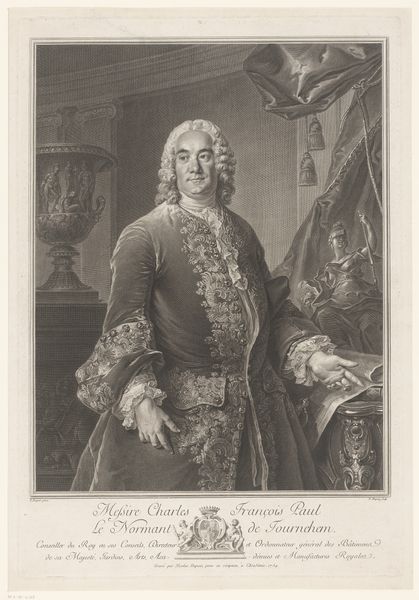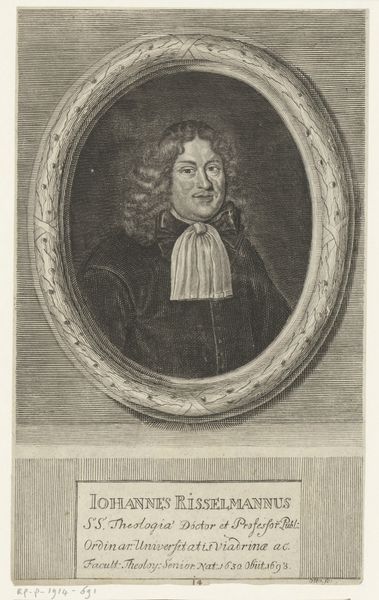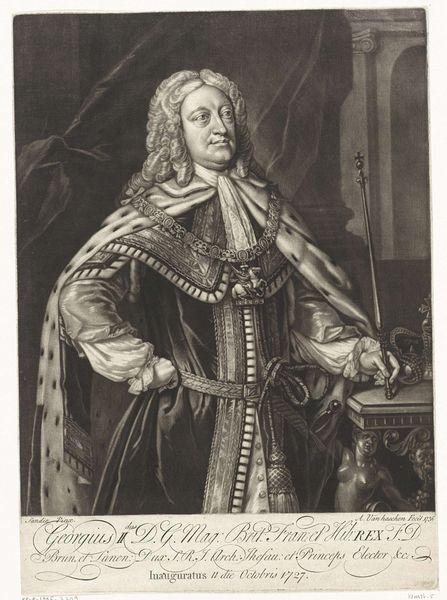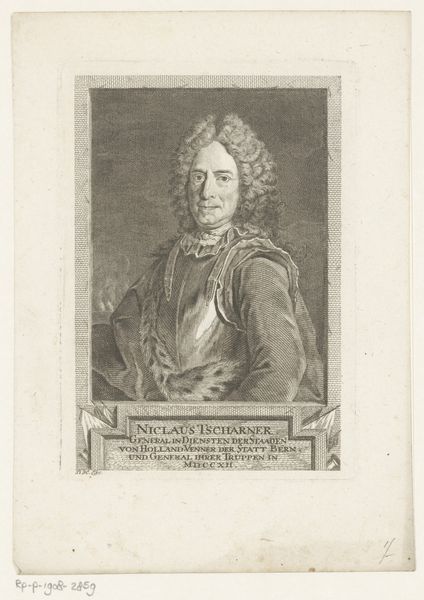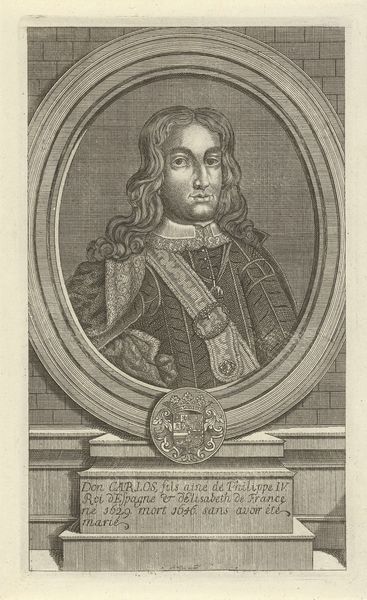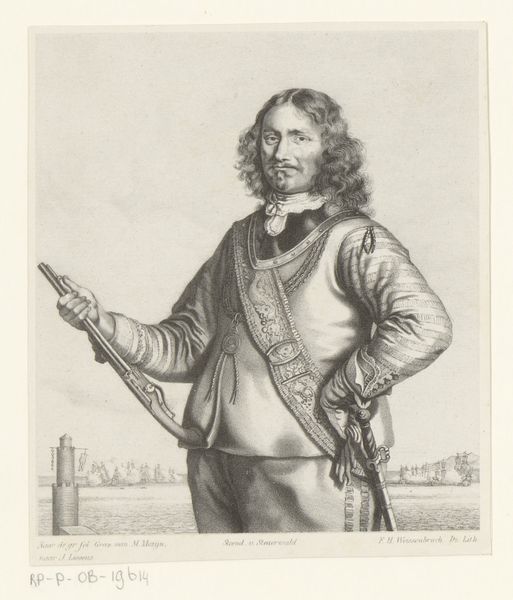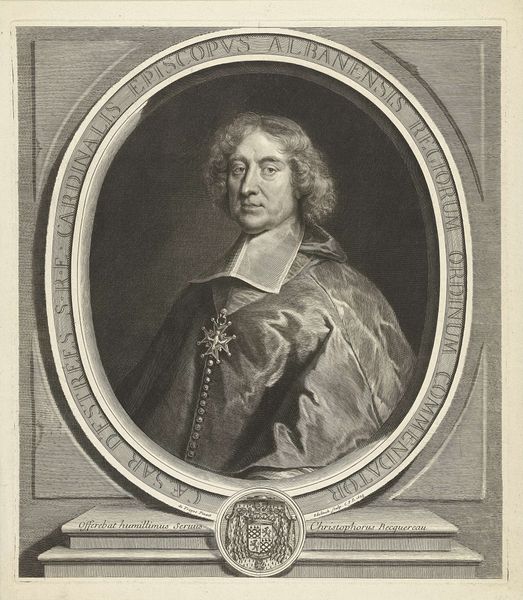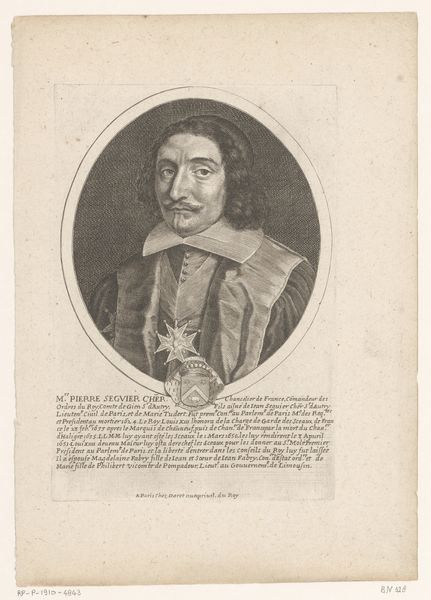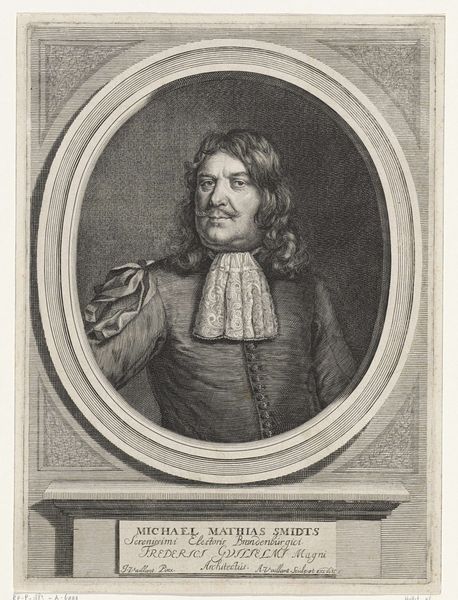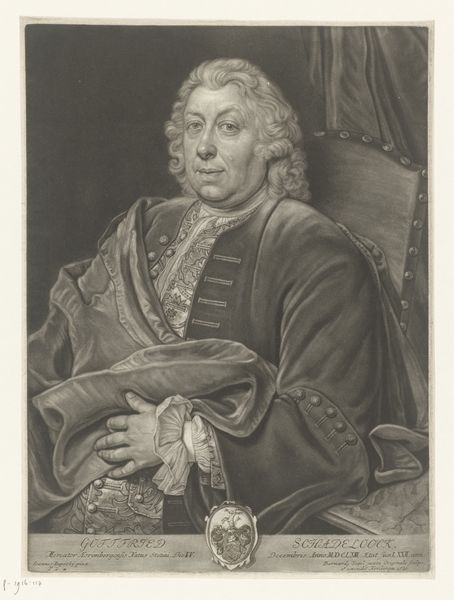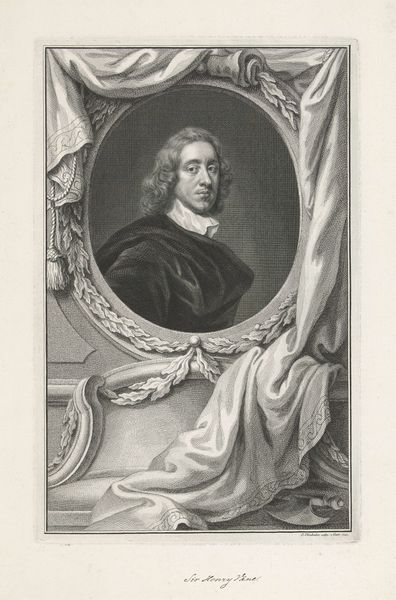
Dimensions: height 122 mm, width 105 mm
Copyright: Rijks Museum: Open Domain
Editor: Here we have Frederik Hendrik Weissenbruch's engraving, "Portret van Aert Jansz. van Nes," created between 1858 and 1862. It feels stately and somber to me, with a touch of nautical bravado with ships at sea, maybe a hint of Rembrandt in the deep blacks, all etched into the plate. What stands out for you in this piece? Curator: Isn't it wonderful how a humble engraving can convey such presence? Forget Rembrandt, for a moment and I would offer this - imagine the artist, Weissenbruch, not just replicating an image, but *channeling* the spirit of a Dutch naval hero, Aert Jansz. van Nes, centuries later. That windswept shore becomes more than a backdrop, eh? What about Van Nes’s hand resting upon his staff – almost defiant? The ships at sail – almost fading away? For me, I imagine Weissenbruch not just making an engraving but *remembering* the golden age and what was once his own Dutch golden age, a faded glory on his soul’s shores. Editor: So, you see a kind of historical yearning or perhaps an invocation of history more than just a portrait? Curator: Precisely! And, as you might have already guessed, it's also Weissenbruch wrestling with his own time; using Van Nes as a ghost from a fading yet heroic age, but his history is now set against the coming of something much less powerful…something now long, long faded away and perhaps something of our own ghostly projections…I digress. What *do* you think? Editor: I guess the ships symbolize that bygone era in all its fullness but from another angle they speak of loss… Curator: Loss… yes, very good, like echoes of thunder across the centuries. That is well and true. Editor: I like the fresh perspectives on history and the emotions stirred by art, and seeing them echoed back again… Curator: Always remember, dear student, it’s our feelings which keep images alive.
Comments
No comments
Be the first to comment and join the conversation on the ultimate creative platform.


